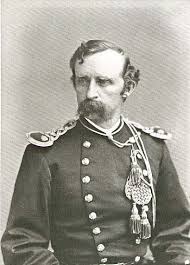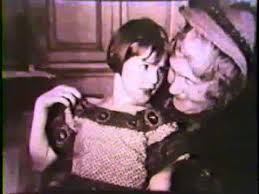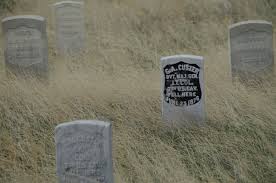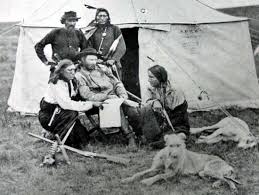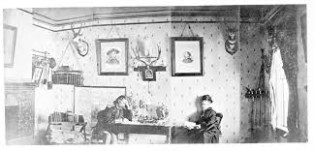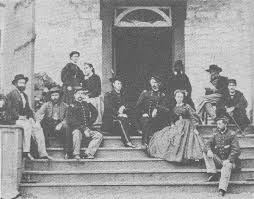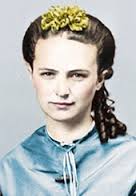Enter to win a copy of the book
Entertaining Women: Actresses, Dancers, and Singers in the Old West.
“I wish you could have seen Maudie that night. She was simply wriggling with excitement. It was all I could do to keep her in her dressing-room until the cue came for her to go on…. Just before the curtain went up I made her repeat her first-act lines to me. She had learned them like a parrot, to be sure, but she spoke them like a true little actress.”
Annie Adams’s comments about her daughter Maude’s first full performance at the age of 5 in November, 1877 at the Metropolitan Theatre in San Francisco.
The Palmer Theatre House in New York was jammed to the doors by a curious clientele all there to see the new actress working opposite the most celebrated actor of the day, John Drew. It was October 3, 1892 when the stunning, elfin-like Maude Adams took to the stage in the play “The Masked Ball.” At the end of the evening Drew would be congratulated on his admirable acting job, but Maude would score a hit that would be greater than his entire career. Her performance was so successful the applause lasted for a full two minutes after she made her exit. She was on her way to becoming a star and local newspapers predicted her talent would be talked about for years to come.
“Her performance (in the Masked Ball) was a revelation. There is one scene in the second act where in order to punish her husband for some ante nuptial remarks of his she has to pretend that she is drunk. It was just touch and go whether the scene ruined the play or not. It would have been hard to devise a more crucial test for an actress of even the wildest experience and the greatest skill. In order to carry off this scene successfully it was necessary for the wife to appear to be drunk and yet be a gentlewoman at the same time. Miss Adams achieved this feat. If Miss Adams had done nothing else throughout the entire play than that one scene it would have stamped her as a comedienne of the first order forever.” The New York Daily News – October 4, 1892
Maude Adams’s stage career began at the tender age of nine months. The play was called “The Lost Child” and the baby that was playing the lead became fussy and could not continue in the show after the first act. Maude’s mother, Annie, who was the female lead in the production, suggested her daughter take the child’s place. Maude was so good that the other baby received her two weeks notice immediately after the play ended. For the remainder of that season all the infant roles were played by little Miss Maude.
To learn more about Maude Adams and the other talented performers of the Old West read Entertaining Women: Actresses, Dancers, and Singers in the Old West.
National launch of the book will take place at the Nevada County Narrow Gauge Railroad Museum in Nevada City, CA. on Saturday, October 17 from Noon until 2 p.m. A special showing of the mockumentary An Ounce Short will be shown at the event.


